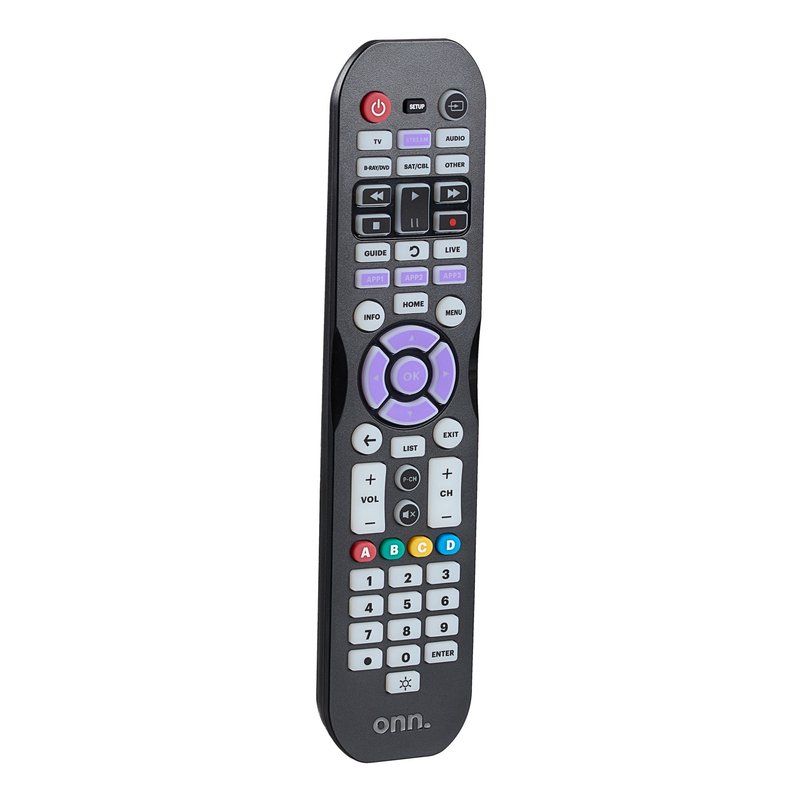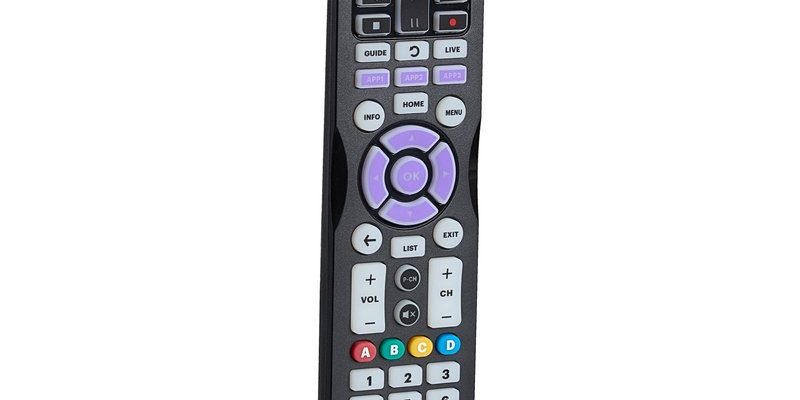
You might have heard of the One For All remote. This little gadget claims it can *replace* all your other remotes: TV, soundbar, streaming box, you name it. Pretty cool, right? But sometimes things change—you upgrade a device, hand down the remote, or just want a clean slate. That’s when knowing how to *unpair* the remote from a device is a must. And, honestly, the steps aren’t always obvious (or printed in large, friendly letters). So, let me break it down, step by step, no technical jargon—just what you need, in plain English.
What Does “Unpair” Really Mean With Universal Remotes?
Here’s the thing: when we say “unpair” with a universal remote, we’re talking about erasing the stored codes or resetting the remote so it forgets how to control that TV, soundbar, or whatever you synced it with. Think of it like clearing someone’s number from your phone—once it’s gone, you have to re-add it if you want to call again.
With the One For All universal remote, it operates by storing specific codes for each device you pair it to. If you want to unpair, you’re basically telling the remote, “Forget this device ever existed.” This can stop those accidental volume changes if you’re trying to control something else. You might want to do this if you’ve programmed it to the wrong device, if you sold your old TV, or if the remote is acting up.
Honestly, I’ve seen people get frustrated and just pull the batteries out, thinking that will do the trick. But it’s not really that simple (spoiler: yanking the batteries just erases temporary memory, not those persistent codes). The One For All is designed to *remember*—sometimes a little too well—so if you want a fresh start, you need to follow a couple of steps to properly unpair.
Why Would You Want To Unpair Your One For All Remote?
You might be wondering, “If universal remotes are supposed to control *everything*, why would I want to unpair mine?” Fair question! Here are a few real-life examples that might sound familiar:
- Device Swap: You upgraded your old TV to a shiny new one, and the remote keeps trying to control the old model’s settings.
- Hand-Me-Down Remote: Maybe your younger sibling or your parents inherited your One For All remote, but it’s still paired to your devices.
- Code Confusion: You accidentally synced the remote to the wrong device, so now it keeps changing channels on your cable box instead of your TV.
- Troubleshooting: The remote is acting wonky—random button presses, laggy response, or not working at all. Sometimes, a full reset clears out any stubborn glitches.
Unpairing the remote is a little bit like resetting your phone to factory settings before you sell it. You want to give whoever gets it next a fresh start, without any weird surprises. Plus, who wants to press “Volume Up” and have the wrong speaker blast music by accident?
How Do One For All Remotes “Pair” With Devices Anyway?
Let me explain how this magic works under the hood. When you first set up your One For All universal remote, you have to enter a *code*—a number sequence that tells the remote how to “speak” to your specific TV, sound system, or streaming box. Basically, every device brand (and sometimes even different models) has its own language, and the code is like a translator.
Pairing the remote is all about inputting the right code so it can send the exact signals your device expects. That’s how pushing “Power” or “Volume” on the remote actually does something. If you enter the wrong code, nothing happens, or you get those “ghost” effects—like the TV turning off when you meant to mute, or the DVD player suddenly waking up.
So, when you *unpair*, you’re deleting that translator code. No code, no communication. The remote is back to being a blank slate, and you’re free to start fresh or move it to another room without the confusion.
Step-by-Step: How To Unpair One For All Universal Remote From A Device
This is the meat and potatoes—the detailed process for those who want clear, simple instructions (without the usual “user manual panic attack”).
Step 1: Locate the Remote’s Reset Method
Most One For All remotes don’t have a dedicated “unpair” button. Instead, you’ll use a reset process. Grab your remote and find the “SETUP” or “MAGIC” button (this is usually a little button with a star or the word “SETUP”).
Step 2: Hold the Setup Button
Press and hold “SETUP” until the LED indicator light flashes twice or stays on. This tells you the remote has entered programming mode—kind of like waking it from sleep.
Step 3: Enter the Reset Code
Here’s the magic number: On most models, you’ll enter 9-8-1 (that’s “Nine, Eight, One” on the number pad). When you do this, the remote will blink twice, confirming it’s wiped the stored codes and settings.
Sometimes, it’s 9-8-0 for a “device reset” (just erasing one device’s code), or 9-8-1 for a “factory reset” (wipes everything). If you’re unsure, check the manual or the One For All website—model numbers matter!
Step 4: Test the Remote
Now, point the remote at your old device and try pressing the “Power” or “Volume” buttons. Nothing should happen. That means you’ve successfully unpaired it. You can repeat the programming steps for a new device whenever you want.
Step 5: Re-Pair, If Needed
If you’re ready to sync the remote to a new device, just follow the original code entry steps. The remote is now a blank slate.
What If The Remote Still Controls The Device After Reset?
Okay, so you did everything “by the book,” but your remote still seems to have a mind of its own. Maybe you press a button and your old device still responds. This is where troubleshooting comes in—a little like detective work for remotes.
First, double-check that you entered the correct reset code. Did you do 9-8-0 or 9-8-1? They’re easy to mix up. Some remotes have multiple modes (TV, DVD, AUX, etc.) and might only reset one mode at a time. Try resetting each mode individually—hold “SETUP,” wait for the LED, select the device button (like “TV” or “AUX”), then enter the reset code.
If you’ve removed the batteries to “force a reset,” remember: the persistent memory might not clear with just a battery pull. Always use the reset code method.
Still stuck? Sometimes remotes hold onto a ghost charge. Take the batteries out, press every button on the remote (yes, every single one), wait 60 seconds, then put the batteries back in. This drains any leftover static. It sounds weird, but it works for some sticky issues.
Comparing Unpairing: Universal Remote vs. Brand-Specific Remote
You might be thinking, “Is it this tricky with every remote?” Honestly, most brand-specific remotes (like the one that shipped with your TV) don’t even need to “unpair”—they’re hardwired to just one device. Universal remotes, on the other hand, are like social butterflies—they can mingle with lots of devices, so they need a way to forget old connections.
- Universal Remotes: Use codes to pair with multiple brands and models. Need manual resets to unpair. Great flexibility, but a little more setup work.
- Brand-Specific Remotes: Usually just work with one device. No codes, no unpairing—either the remote works, or it doesn’t (unless you want to reprogram for another device, which is rare).
If you love the simplicity of “one remote, one device,” brand-specific is less hassle. But if your coffee table looks like a remote control graveyard, universal remotes are a lifesaver—as long as you know how to unpair and re-pair when needed!
Universal Remote Reset: What Happens To Batteries and Settings?
You might be curious—when you reset or unpair the remote, what happens to the batteries and any other custom settings? The answer: The remote forgets all codes you’ve programmed, but your batteries stay fine (unless they’re already running low).
Resetting does **not** erase permanent hardware settings (so your remote won’t suddenly start speaking Klingon). It just wipes out the pairing codes and returns your One For All remote to “factory default” mode. If you programmed any special shortcuts, macros, or custom button mappings, those will also be lost. Think of it like clearing your saved Wi-Fi networks on your phone.
Just a tip: If your remote starts acting sluggish or the LED is dim, it might be time to swap out those batteries anyway. Low battery power can make troubleshooting a real headache—you’ll chase phantom problems that are just down to some dead AAAs.
Troubleshooting: Common Pitfalls and How To Avoid Them
Let’s be real—sometimes things don’t work the way they should, even when you follow every step. Here are a few common roadblocks and how to sidestep them:
- Wrong Reset Code: Double-check your model and the reset sequence. Not all One For All models use the same code, so always check your manual if the generic 9-8-1 doesn’t work.
- Partial Reset: Some remotes reset just one paired device at a time (TV, DVD, etc.). If you want a total clean slate, make sure you’re resetting every device mode on the remote.
- Stuck Buttons or Dirt: Remotes are magnets for dust and sticky fingers. If a button is stuck, the reset might not register. Tap out the remote gently, or run a cotton swab around the button edges.
- Battery Drama: If your remote randomly works (or doesn’t), weak batteries might be the villain. Always start with fresh, new batteries when troubleshooting pairing or resetting issues.
Here’s my own “oops” moment: I once spent 20 minutes trying to reset a remote that I’d accidentally switched into the wrong device mode. Turns out, pressing the right mode (TV, DVD, etc.) before entering the reset code made all the difference!
Key Takeaways: Keeping Control Over Your Universal Remote
Mastering how to unpair a One For All universal remote from a device is all about knowing the reset process and understanding what’s actually happening inside that little plastic shell. Once you get the hang of using the SETUP button and the secret codes (like 9-8-1 or 9-8-0), there’s no tech hiccup you can’t handle. Plus, you’ll save a ton of time (and possibly avoid a few arguments over who changed the channel).
Setting up and clearing universal remotes doesn’t have to be a mystery or a stress test. Armed with a little know-how and patience, you’ll be pairing and unpairing like a pro—swapping between gadgets, helping friends, or just keeping your sanity when tech decides to get weird. So the next time your One For All remote thinks it’s in charge, just remember: *you* hold the power to reset and take control.
Honestly, once you’ve done it once, it’s like learning to ride a bike. Those “secret codes” become second nature, and you’ll wonder why you ever let the remote boss you around in the first place!
